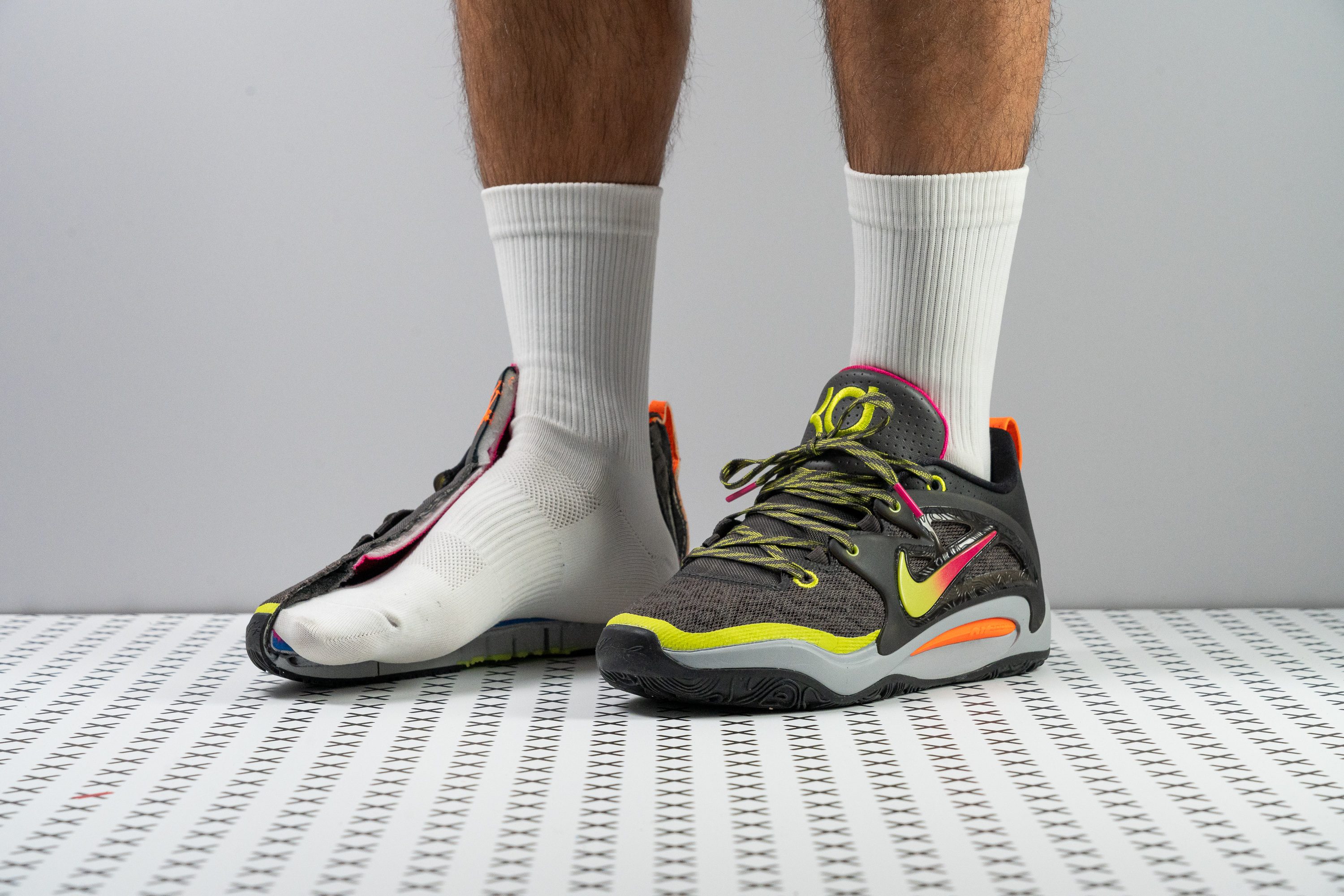Our verdict
- Top pick in best outdoor basketball shoes (2023)
- Top pick in best Nike basketball shoes (2023)
Pros
- Consistent grip on different surfaces
- Dust-resistant outsole
- Plush and protective foam
- Bouncy midsole
- Secure heel counter
- Feels light
- OK for outdoors
Cons
- Not for wide-footers
- Lacks flexiblity
Audience verdict
- Top 4% in basketball shoes
- Top 8% in Nike basketball shoes
Comparison
The most similar basketball shoes compared
+ + Add a shoe | |||||
|---|---|---|---|---|---|
| Audience score | 92 Superb! | 87 Good! | 90 Great! | 88 Great! | |
| Price | £150 | £135 | £145 | £160 | |
| Signature | Kevin Durant | Devin Booker | Kevin Durant | LeBron James | |
| Shock absorption | - | Moderate | High | Low | |
| Energy return | - | Low | High | Moderate | |
| Traction | - | Moderate | High | Low | |
| Top | Low | Low | Low | Low | |
| Ankle support | ✓ | ✓ | ✓ | ✓ | |
| Weight lab | 14 oz / 398g | 13.6 oz / 386g | 14.9 oz / 422g | 13.1 oz / 372g | |
| Lightweight | ✓ | ✓ | ✗ | ✓ | |
| Breathability | Moderate | Warm | Breathable | Moderate | |
| Outsole durability | - | Decent | Decent | - | |
| Drop lab | 6.2 mm | 7.0 mm | 4.8 mm | 4.9 mm | |
| Heel stack lab | 26.7 mm | 26.9 mm | 26.7 mm | 26.9 mm | |
| Forefoot | 20.5 mm | 19.9 mm | 21.9 mm | 22.0 mm | |
| Size | True to size | Slightly small | True to size | True to size | |
| Midsole softness | Balanced | Balanced | Balanced | Firm | |
| Stiffness | Stiff | Moderate | Moderate | Flexible | |
| Torsional rigidity | Stiff | Stiff | Moderate | Moderate | |
| Heel counter stiffness | Moderate | Stiff | Moderate | Flexible | |
| Width / fit | Narrow | Medium | Medium | Medium | |
| Toebox width | - | Medium | Medium | Medium | |
| Midsole width - forefoot | Very narrow | Average | Average | Very narrow | |
| Midsole width - heel | Average | Narrow | Average | Average | |
| Heel padding durability | - | Good | Good | Decent | |
| Toebox durability | - | Decent | Decent | Decent | |
| Insole thickness | Average | Average | Average | Average | |
| Outsole hardness | Average | Average | - | Average | |
| Outsole thickness | Average | Average | Average | Average | |
| Heel tab | Finger loop | Finger loop | None | Finger loop | |
| Ranking | #3 Top 4% | #31 Bottom 41% | #8 Top 16% | #27 Bottom 49% | |
| Popularity | #49 Bottom 44% | #12 Top 23% | #9 Top 17% | #35 Bottom 33% |
Size and fit
Size
Nike KD 15 fits true to size (56 votes).
Who should buy the Nike KD 15
Given its strengths and weaknesses, the Nike KD 15 is apparently for the following:
- basketball players who have narrow to normal-sized feet
- hoopers who enjoy generous cushioning that's a little more on the soft side
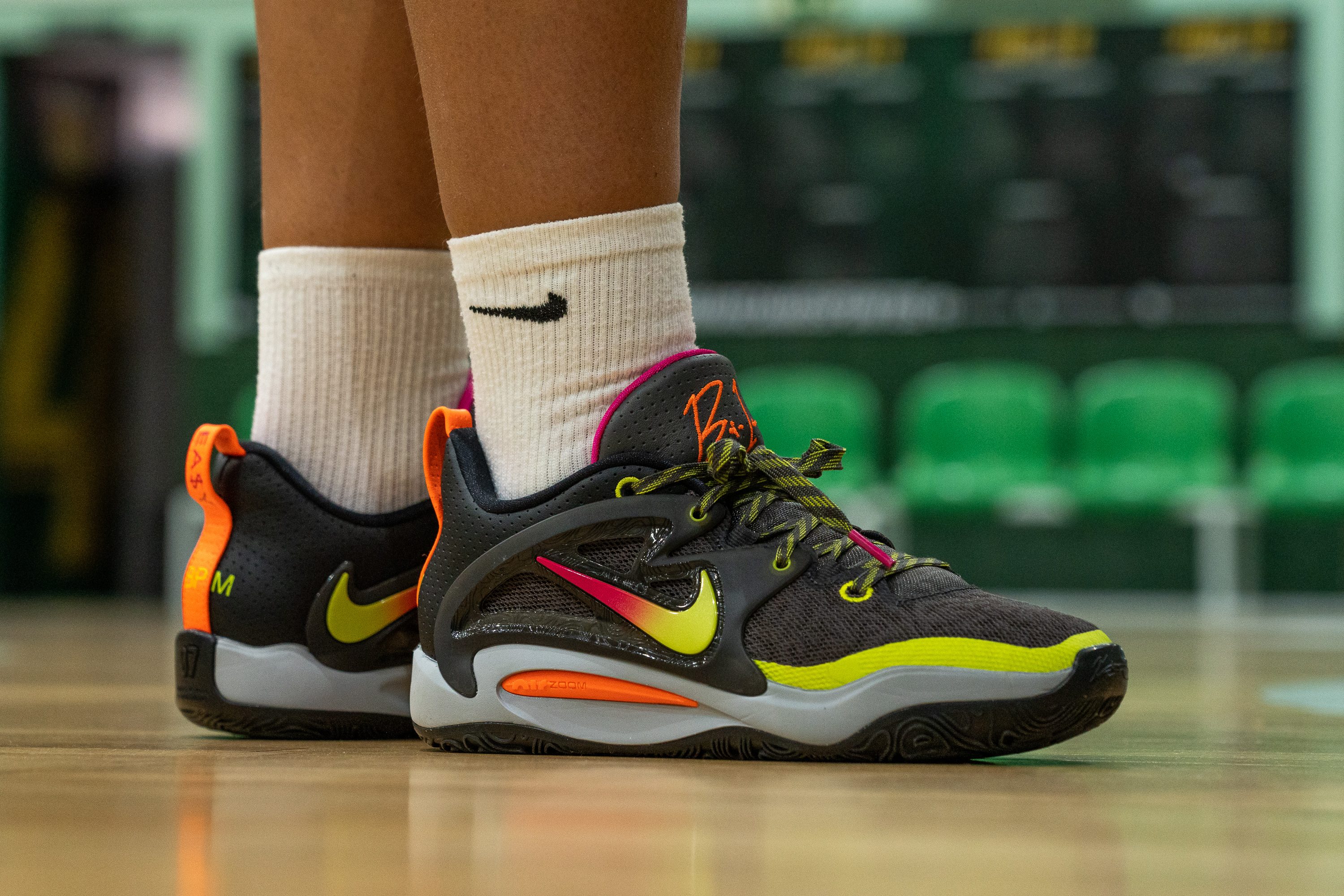
Who should NOT buy this basketball shoe from Nike
We don't expect those with wide feet to enjoy the KD 15 or any shoe from the KD line for that matter. Kevin Durant's feet, the obvious basis for the shoe's design, are recognised by fans for being narrow. The Cosmic Unity is a good alternative. Other reasonable options that we could think of are the Nike Ja 1 and most of the shoes from LeBron James's multiple shoe lines with Nike.
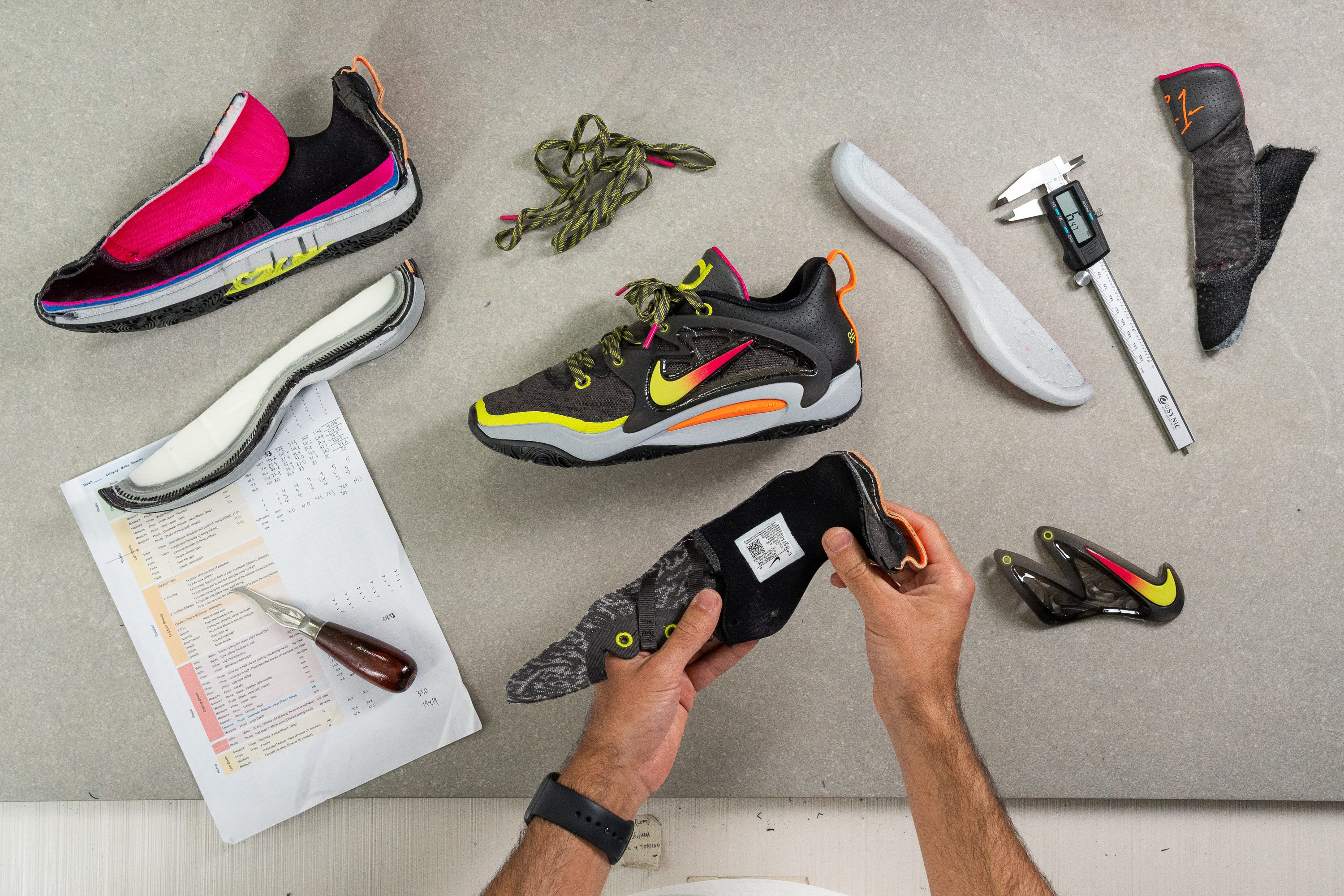
The KD 15 offers a great bite anytime, anywhere
We are more than glad that the 15th KD signature shoe from Nike is gripping super well on different surfaces
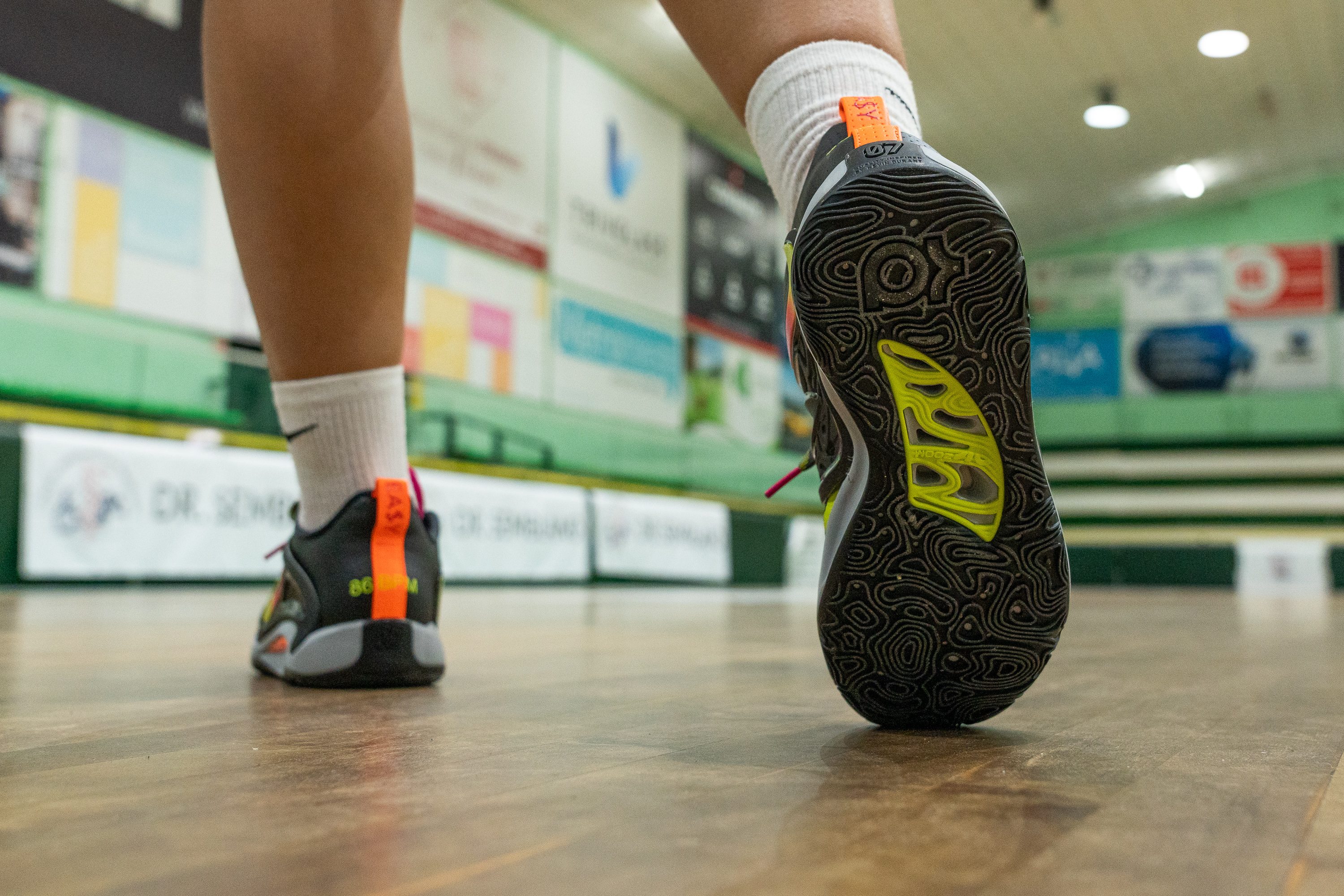
What really excites us is the fact that dust pickup is not that much of a problem and that little to no wiping is necessary to maintain the outsole's beastly grip.
We discovered that this shoe has a tonne of grip on the indoor hardwood and the rougher outdoor courts.
Not bad for outdoors
Frequent outdoor use of the KD 15 is something we don't recommend, though, because there is not that much rubber in the outsole.
We measured outsole thickness at 4.2 mm which is actually thicker than on some of the other Nike basketball shoes, like the Cosmic Unity 2 (3.0 mm). The latter is considered to be OK for outdoors. Thus, the KD 15 may not be such a disaster if you play outdoors occasionally.
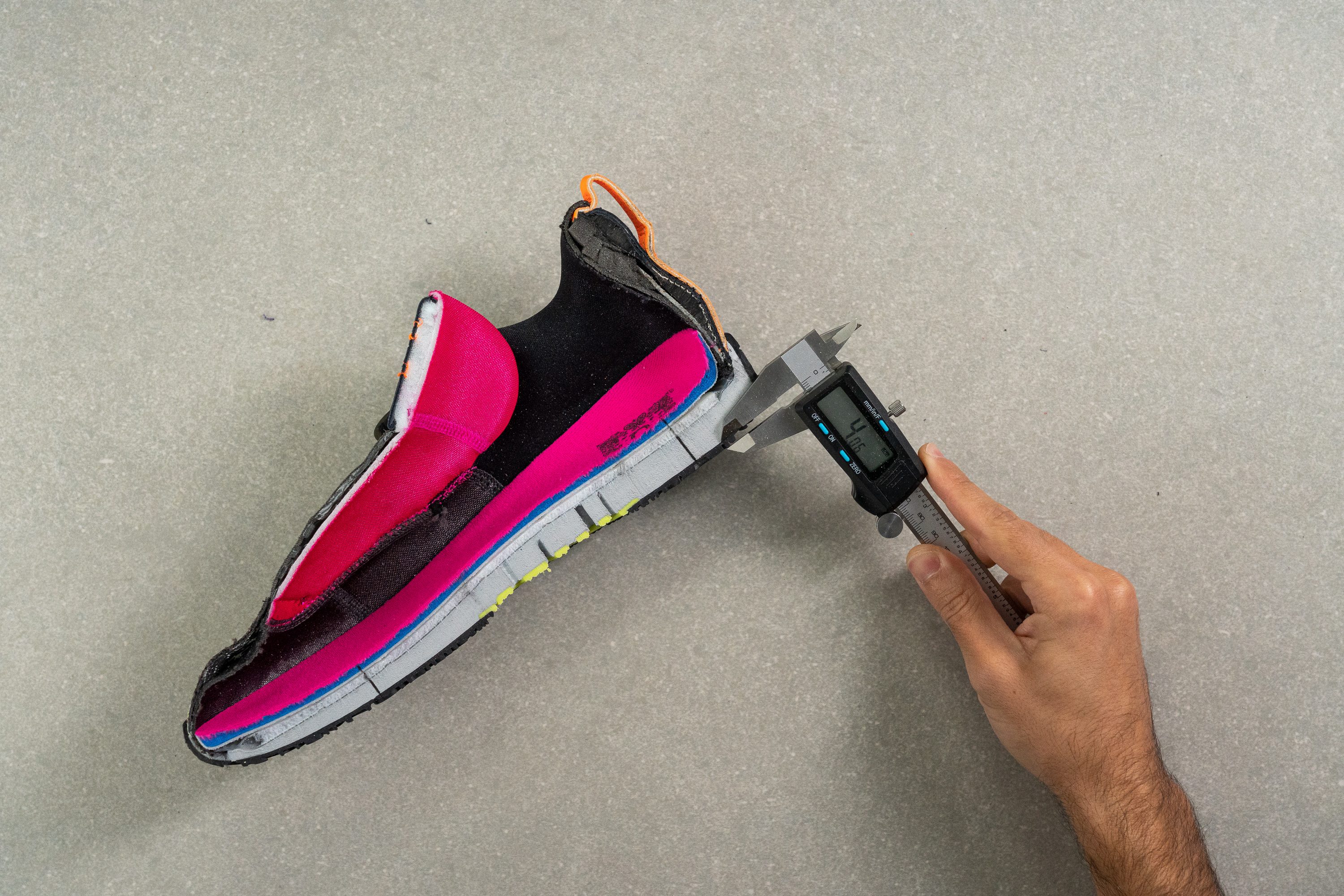
We also tested how stiff the rubber is. It turns out to be on the firmer side actually, which is also a good sign for durability. Softer shoes tend to be grippier but don't last as long.
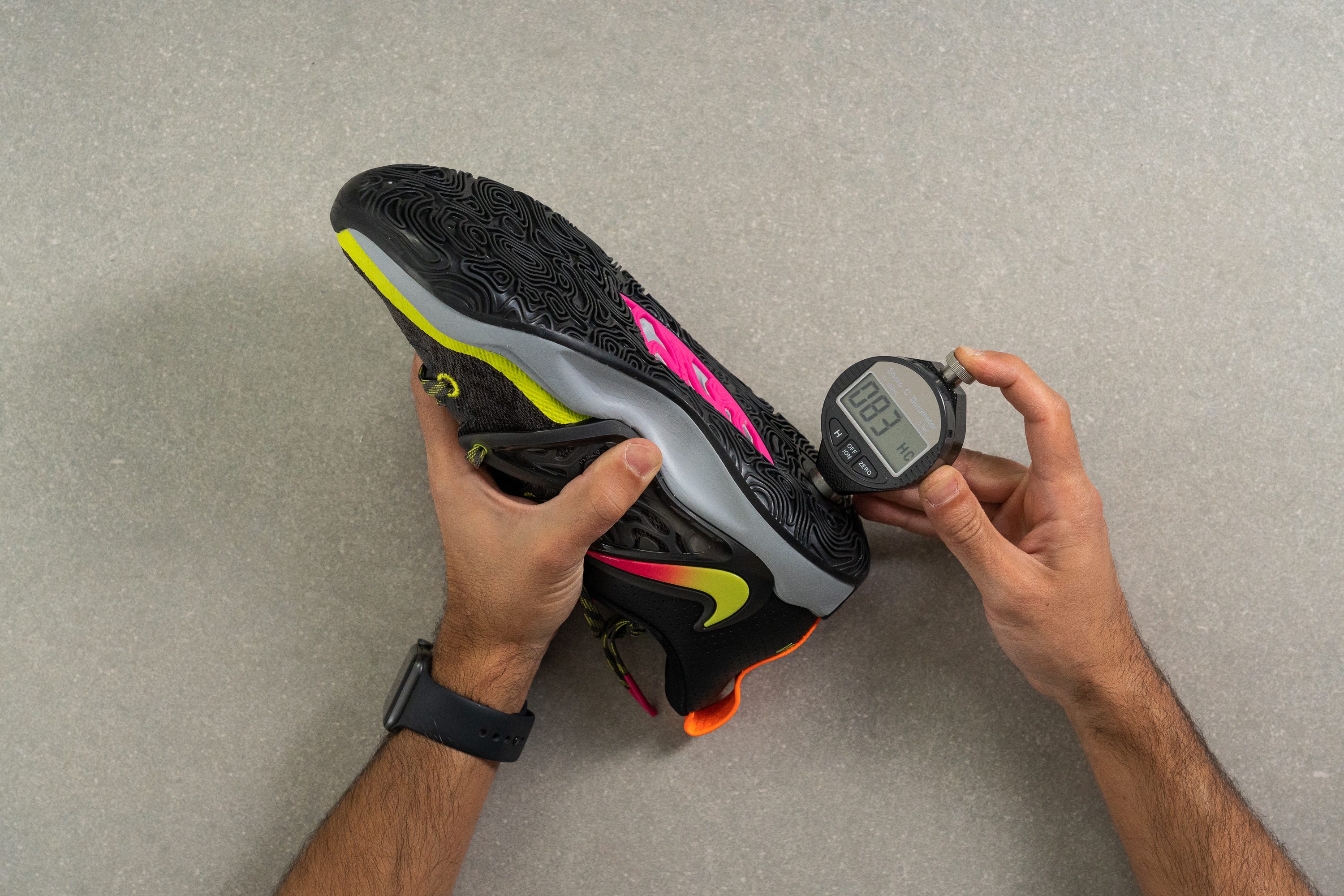
Not-so breathable figure-hugging upper
Straight out of the box, we observe that the Nike KD 15 feels a bit softer than the KD 14 and that it needs very little to no break-in time.
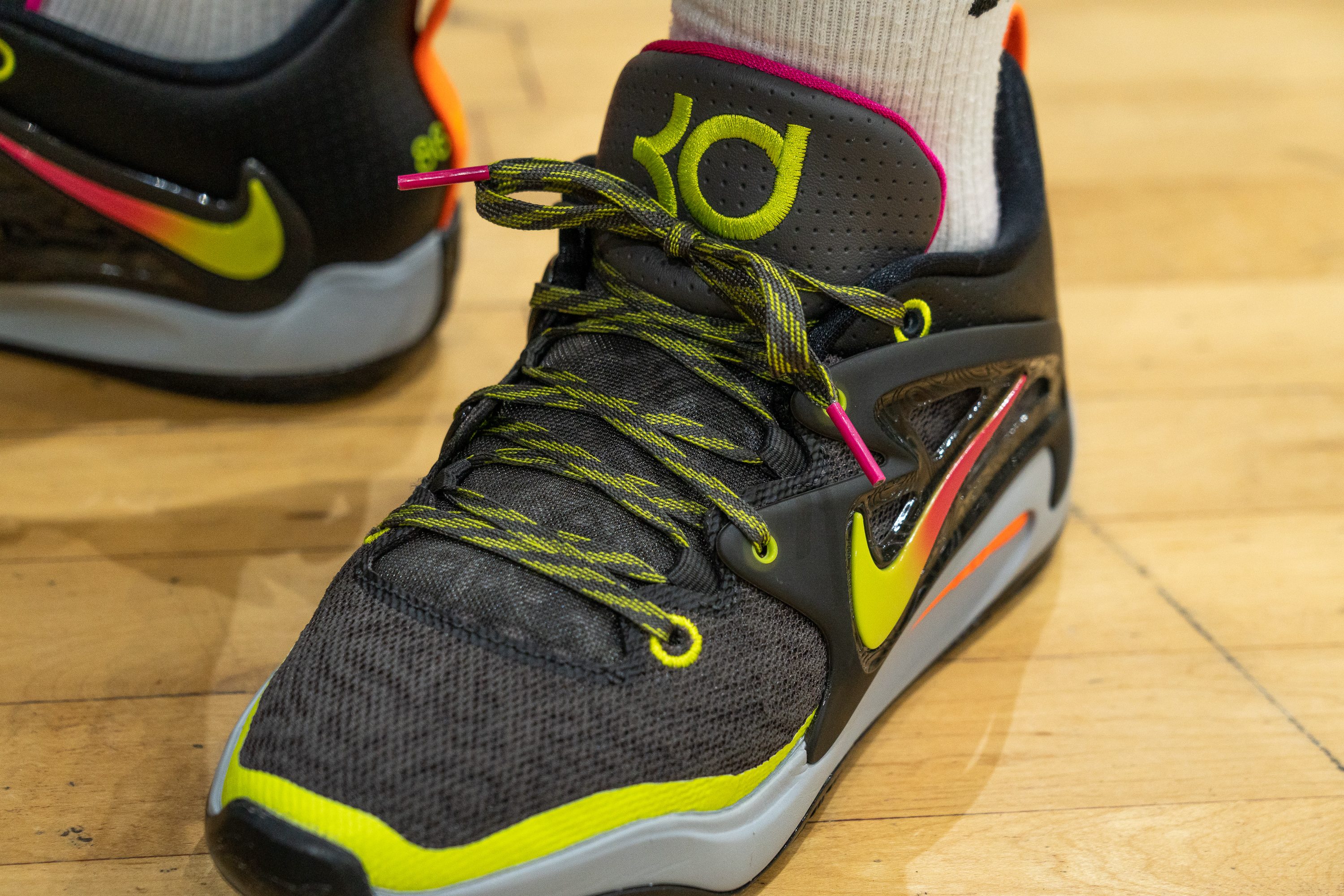
The 15's upper generally feels minimal and is able to conform well to the shape of the foot. Because of this, comfort is ensured.
However, as you can see, the smoke is only coming through the tongue area. There is not much ventilation in the toebox.
Underfoot comfort is a priority for the Nike KD 15
Compared to the Nike KD 14, we feel that the 15 has more cushioning, so impact protection is also more pronounced. The harshness of our aggressive heel strikes and hard landings are mitigated, so we don't feel pain.
The heel stack of the KD 15 is 26.7 mm, while the forefoot is 20.5 mm. This is right at the average of our lab-tested basketball shoes. So, there is indeed a good amount of cushioning.
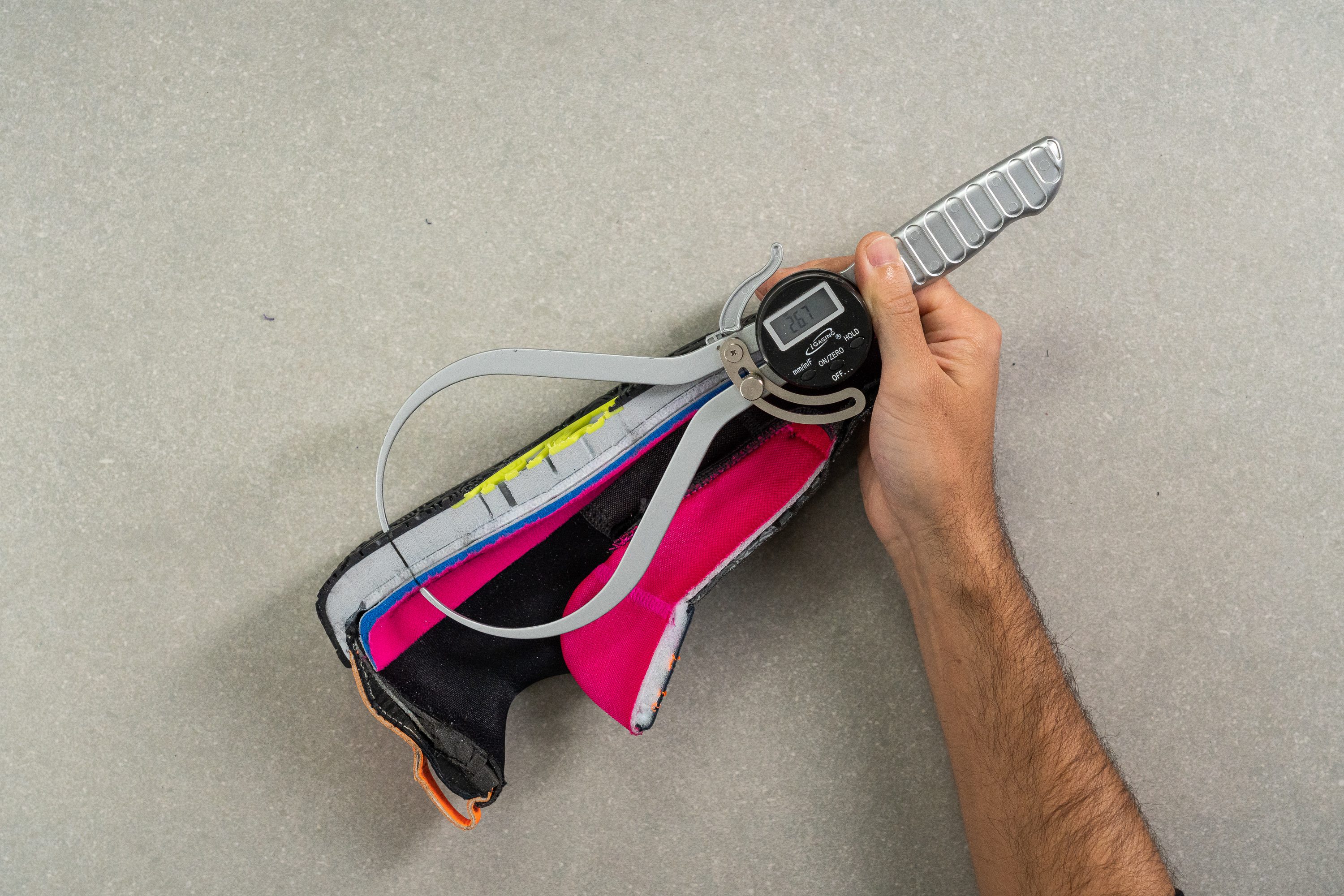
At 5.1 mm, the insole on the KD 15 is thicker than the average (4.2 mm) which definitely contributes to underfoot protection and comfort.
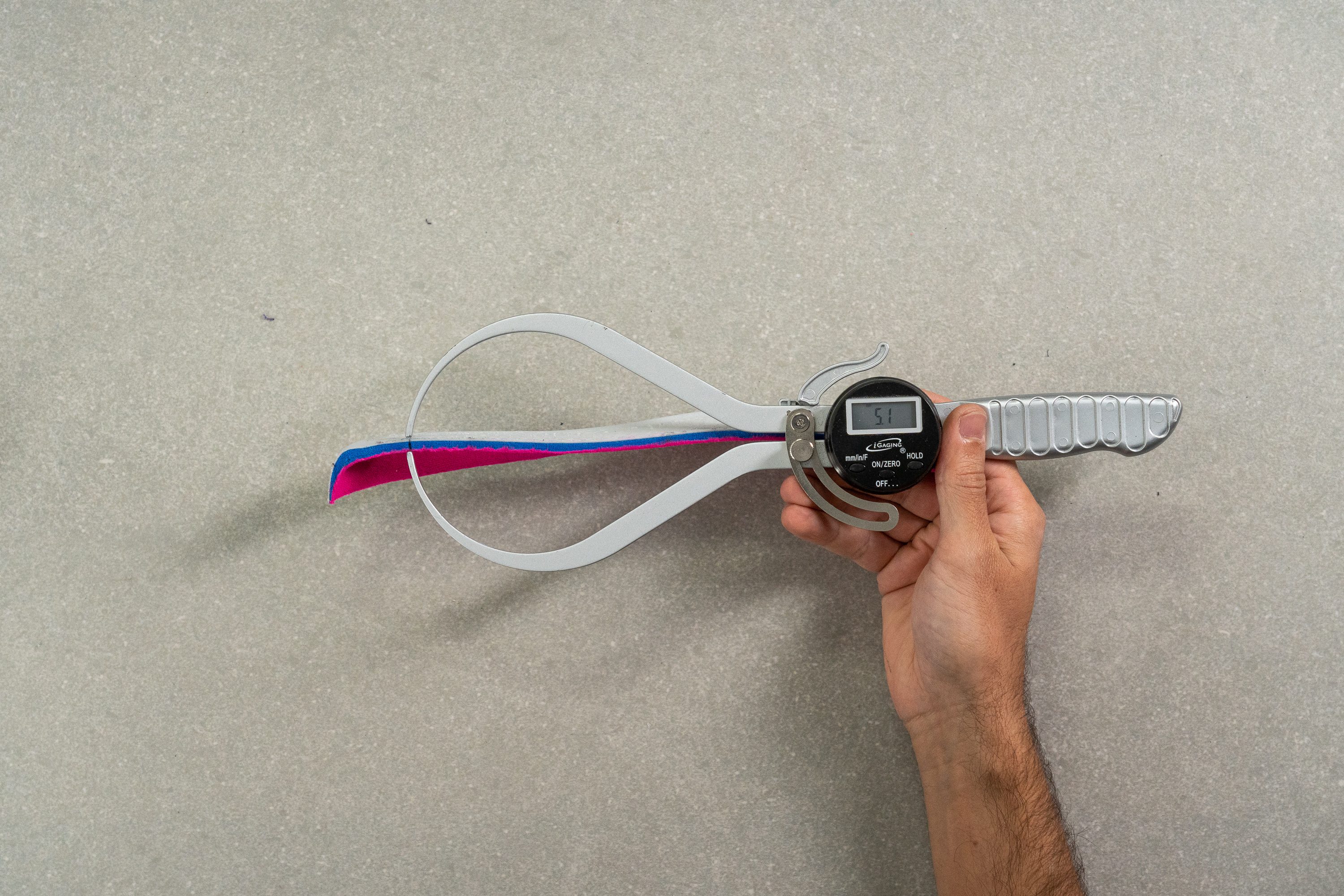
Bounce is pronounced
We verified that the whole midsole setup delivers more spring back, thanks to the efficient design of the midsole.
Our feet witnessed incredible bounce and responsiveness when we wore this KD shoe, all thanks to the Nike Strobel, which we found nothing like it in the market today.
One of the factors that contribute to our bouncy experience is the cushioning softness.
Having checked the shoe's midsole with a durometer, we discovered that it is softer than many other Nike shoes. It is 9% softer than the average
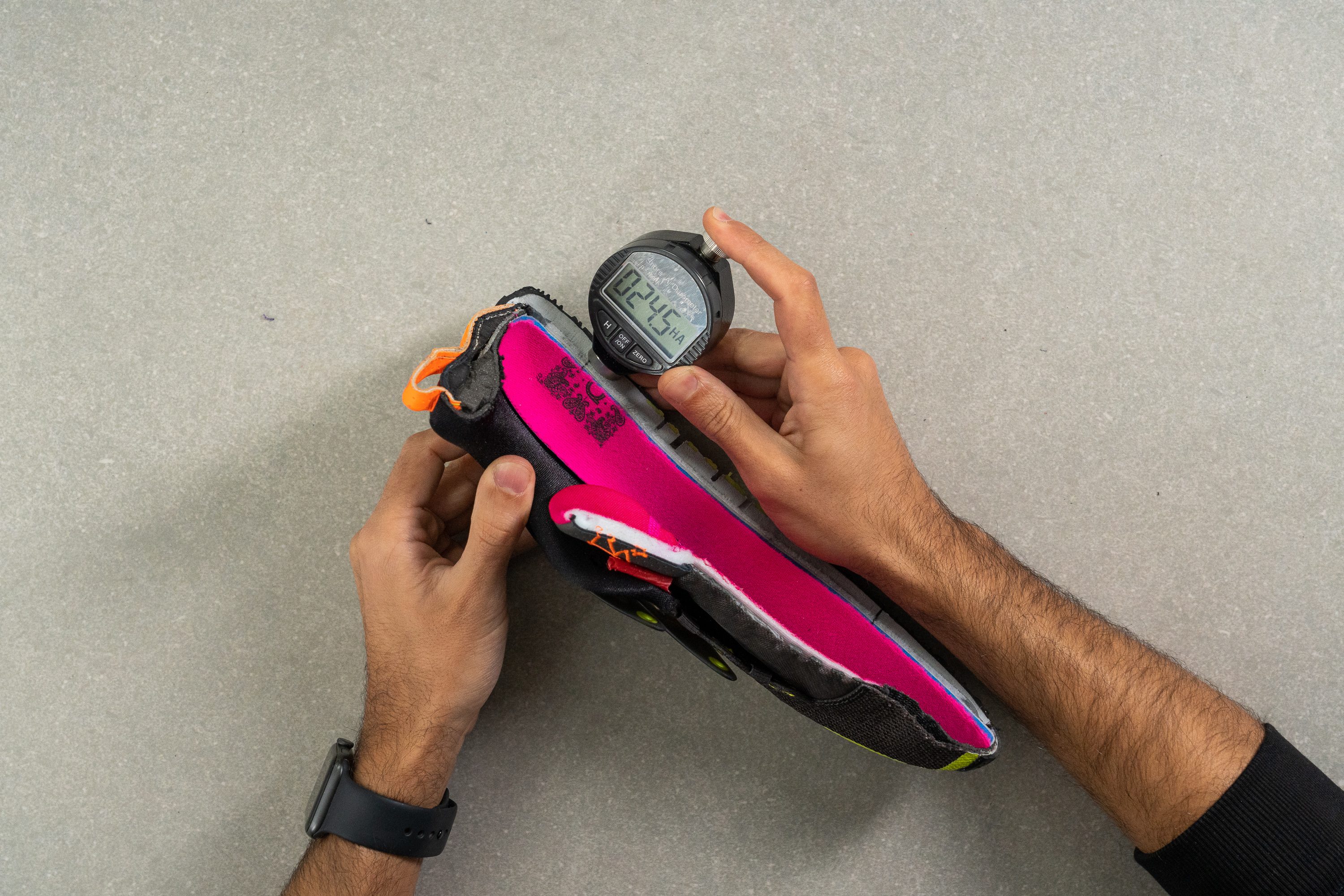
Not so flexible
The KD 15 has got to be one of the stiffest basketball shoes we have ever tried from Nike.
Based on our flexibility measurement, it is 12% stiffer than our lab-tested basketball shoes on average.
Support is not a problem with the 15th KD
At first, we were not entirely satisfied with the shoe's support Fortunately, the cushion eventually softened so some material came up the sides of our foot, hugging it so it stayed in place. We found that the laces were also secure and well-mounted enough to keep the shoe securely on even during aggressive movements.
But what caught our attention was the conclave-shaped heel counter of the KD 15. We considered this a super ergonomic and anatomic design element.
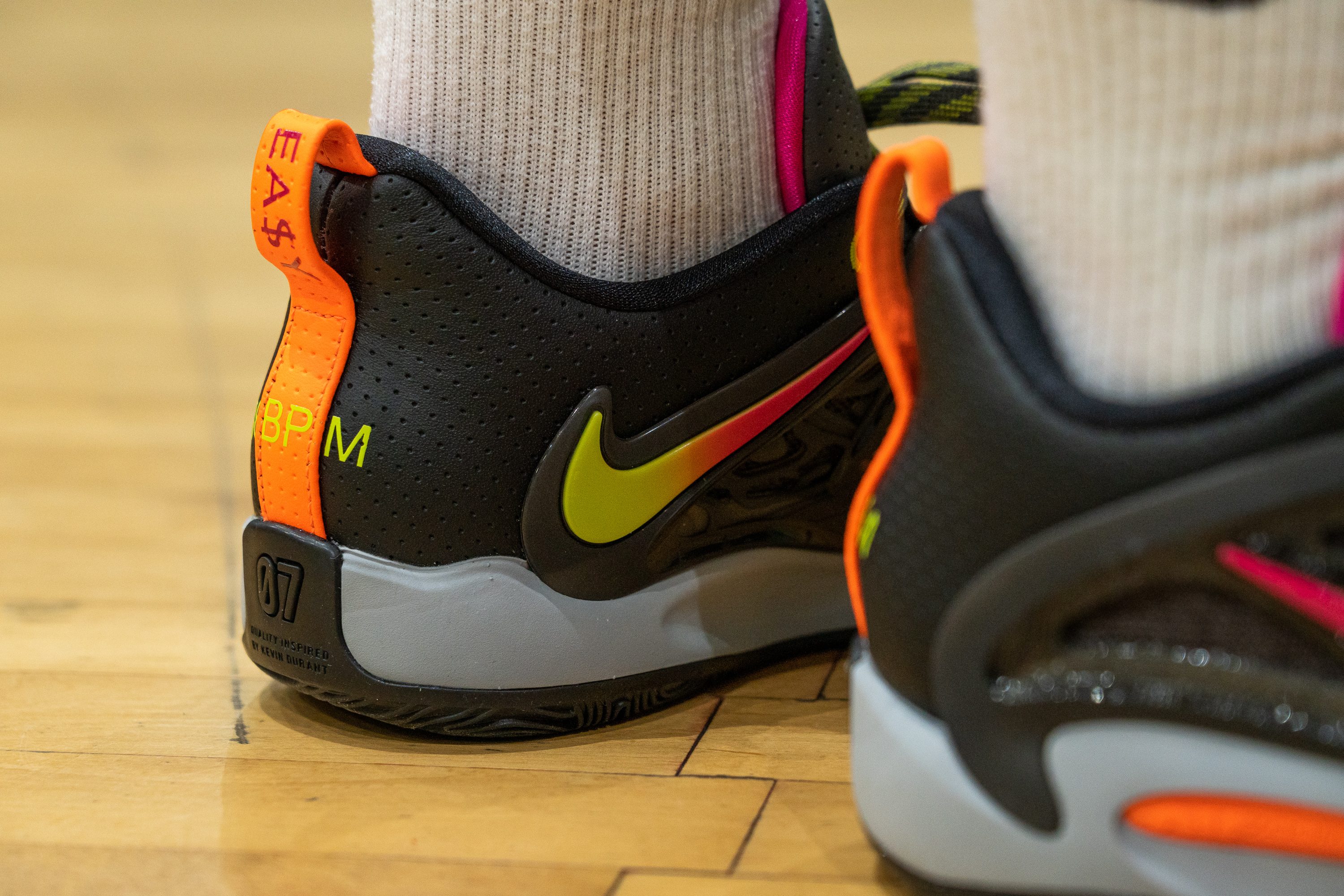
What it does is allow the foot to sit back into the shoe, locking it securely even if the collar isn't that high to cover a good part of the ankle.
Comfortable for non-wide-footers
We learned that the minimal-feeling upper delivers comfort only to the testers among us whose feet are not wide. Though we were surprised that the KD 15 is a lot roomier than the previous KDs, it is still on the narrower side.
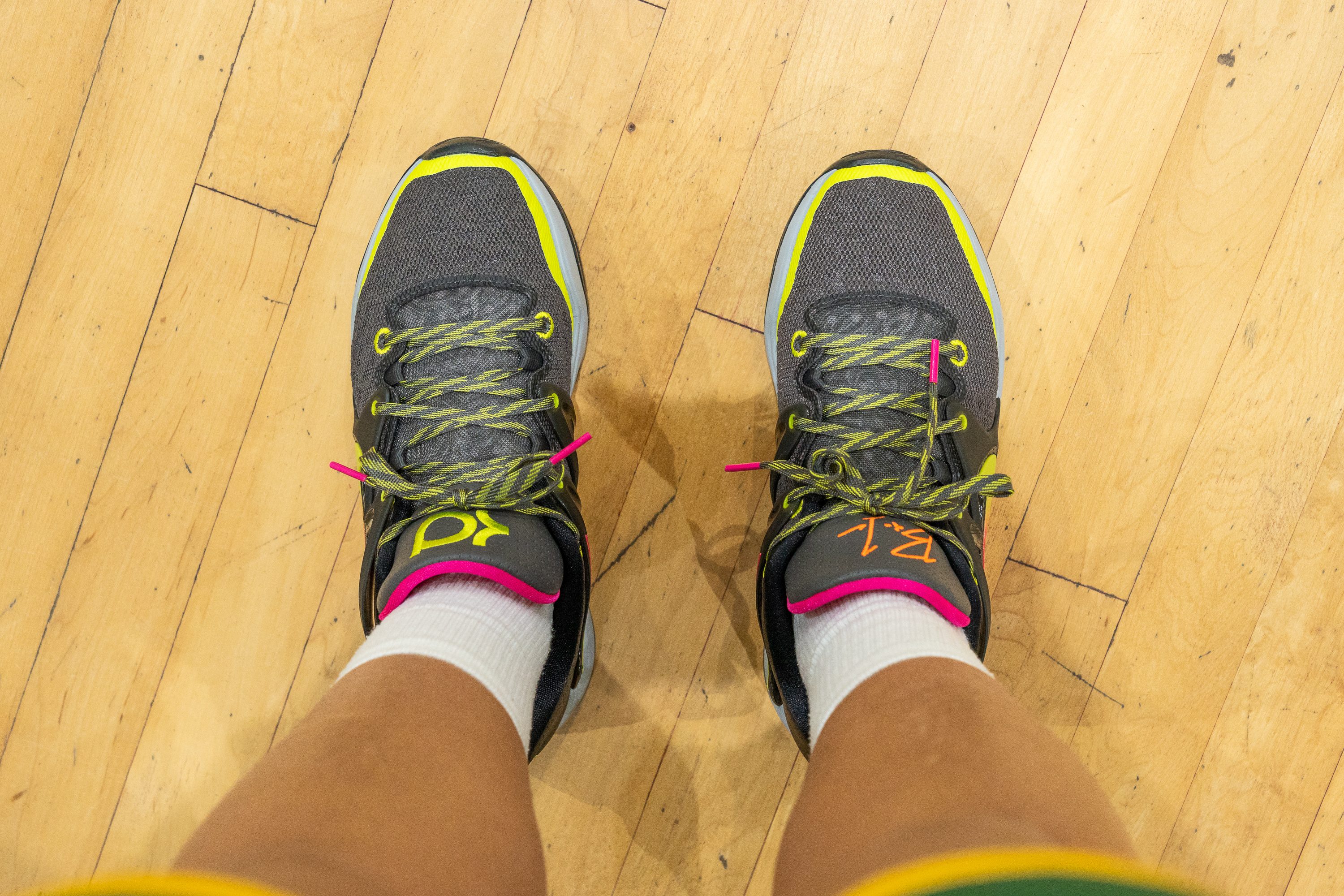
We advise wide-footers to make size adjustments or just avoid this KD shoe altogether.
The Nike KD 15 FEELS light
We spotted that this Kevin Durant shoe is more streamlined and much quicker, which is why we concluded that this is an absolute home run from Nike. We felt that the Nike KD 15 is the lightest KD ever even if it is not what the shoe's actual weight shows.
The KD 15 is at 12.6 oz (357 g), which is way above the average weight of Nike KD shoes which we peg at 12.1 oz (344 g). It is also 20-22 g heavier than the Nike Cosmic Unity 2 and the Air Deldon.

